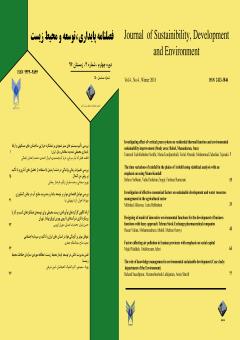-
-
List of Articles
-
Open Access Article
1 - Hazard Identification and Risk Analysis in the Light of Process Safety Management in Mobarakeh Steel Company (Case study: Oxygen and Hydrogen Unit)
Hanieh Nikoomaram Hossein Modaresifar Javad Kiani Mohammad Dehbozorgi -
Open Access Article
2 - Strategies to deal with salinity and oxidative stress in crops
Esmaeil Gholinezhad Reza Darvishzadeh Abbas Abhari -
Open Access Article
3 - Comparison of the Efficiency of Fe3O4 Magnetite Nanoparticles and Zero-valent Iron Nanoparticles in the Advanced Oxidation Process Based on Diproxipersulfate in Sewage Treatment of Leather Industry
Seyed mohsen Beladi roya mafigholami Ali Hashemi zavareh -
Open Access Article
4 - Comparative Study of Social Sustainability in the Rural Areas Covered by the Gavoshan Dam Irrigation and Drainage Network
Fatemeh Javanbakht-Sheikhahmad farahnaz Rostami Hadi Veisi Farzad Amiri -
Open Access Article
5 - Analysis of the amount of natural light and the effect of photovoltaic cells in green educational buildings using the native architecture of Gilan (Case study: Imam Ali Boys' High School, Rasht)
saeed azemati kimia jamshidzadeh -
Open Access Article
6 - Analysis of Environmental inhibitors of Extension worker for activity in production areas (Case study: Organization of Agricultural Jihad in Kermanshah Province)
Narges Moradi Ahangarani Susan Laei Faramarz Malekian Sahar Mohammadi -
Open Access Article
7 - Sustainable Urban Development in Relation to Measuring the Livability Level of Cities (Case Study: Lorestan Province)
mohsen rezaei ali sheikhazami majid vali shariat panahi nasrollah fallahtabar -
Open Access Article
8 - Estimation of physical, real and effective carrying capacity of sports tourism capacity in mountain resorts ecosystems (Case Study: Darban)
Sepideh Mohebi Seyed Mostafa Tayebi Sani Afshin Jafari Bagher Morsal
-
The rights to this website are owned by the Raimag Press Management System.
Copyright © 2021-2025







